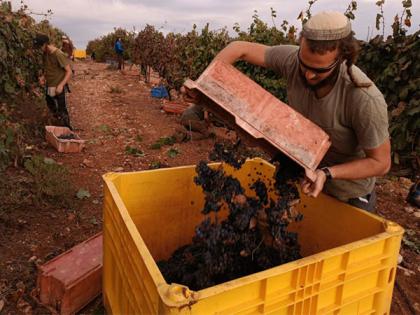Israel launches USD 1.4B national food security strategy for 2050 amid growing threats
By ANI | Updated: May 12, 2025 22:02 IST2025-05-12T21:56:50+5:302025-05-12T22:02:39+5:30
Tel Aviv [Israel], May 12 (ANI/TPS): Faced with mounting threats to its food supply, Israel unveiled its National Food ...

Israel launches USD 1.4B national food security strategy for 2050 amid growing threats
Tel Aviv [Israel], May 12 (ANI/TPS): Faced with mounting threats to its food supply, Israel unveiled its National Food Security Plan 2050 on Monday, laying out a sweeping strategy to prepare the country for climate shocks, labor shortages, and increased dependence on food imports.
The plan, presented by the Ministry of Agriculture and Food Security in cooperation with other government bodies, will require an estimated investment of NIS 2.5 billion- 5 billion (USD 710 million-USD 1.4 billion).
"The risks are clear and immediate," warned Minister of Agriculture and Food Security Avi Dichter at the conference. "Without decisive, coordinated action, we face a future of shortages, instability, and weakened national resilience."
Climate change is expected to slash agricultural yields by tens of percent across multiple crops, while Israel's population is projected to soar to 16.5 million by 2050, leading to a 65 per cent increase in food demand, the ministry said. At the same time, the workforce needed to sustain food production is shrinking, with a deficit of about 5,000 workers today expected to balloon by another 10,000 within five years.
"We are looking at an enormous increase in demand and a simultaneous decline in our ability to supply food locally. The existing gap, if left unaddressed, will only grow wider," said the Agriculture Ministry's Director General, Oren Lavie
Compounding the crisis is Israel's dependence on imports for critical food categories: 97 per cent of sugar and confectionery products, 92 per cent of fish, 91 per cent of grains, and 71 per cent of legumes come from abroad often from just one or two source countries. This makes Israel highly vulnerable to global disruptions, trade restrictions, or climate disasters elsewhere, the ministry noted.
Brig. Gen. (res.) Itzik Bar, Deputy, Head of the National Security Council for Security Policy, cautioned, "In times of war, political upheaval, or supply chain breakdowns, we cannot afford to rely on others for our basic needs. Food security is national security."
Food loss is another urgent concern. According to figures presented at the conference, Israel wastes over 2.6 million tons of food annually, amounting to more than a third of total local production, with an economic cost estimated at NIS 24.3 billion (USD 6.8 billion) each year.
"Wasting food not only drains our economy, it undermines the health and stability of our society," said Sharon Alroy-Preis, Head of Public Health Services at the Ministry of Health.
Against this backdrop, the National Food Security Plan sets out a series of long-term objectives, with targets for 2030 and 2040. Its four strategic pillars are promoting healthy and sustainable diets, ensuring continuous food availability, strengthening production and import capacity, and building long-term resilience.
To achieve these goals, inter-ministerial working groups recommended expanding local agricultural production, particularly in fish, legumes, vegetables, and olive oil; fostering food-tech and agri-tech innovation; creating digital platforms for data and surplus food management; and redesigning import strategies to diversify suppliers and reduce risk.
The Food Industries Group proposed financial incentives and potential taxes to encourage healthier food production and consumption, addressing both health and environmental burdens, which are currently estimated to cost over NIS 55 billion (USD 15.5 billion) per year.
Meanwhile, the Food Loss Group set ambitious goals: cutting food loss per capita by 20 per cent by 2035, and by half by 2050. Measures such as real-time digital trading platforms for surplus food and improved infrastructure to redirect excess production were among the tools recommended.
Despite the plan's scope, officials emphasized that Monday's presentation is only the beginning. "We have the blueprint," said Dichter. "But translating it into reality will require constant monitoring, annual data updates, and flexibility to adapt to new challenges." (ANI/TPS)
Disclaimer: This post has been auto-published from an agency feed without any modifications to the text and has not been reviewed by an editor
Open in app